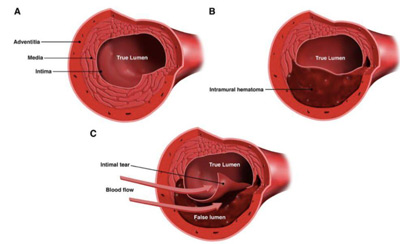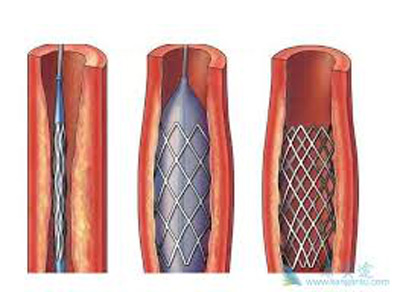Percutaneous transluminal coronary angioplasty (PTCA) results in temporary enlargement of the coronary lumen, restoration of blood flow, and immediate improvement of precardiac ischemia symptoms. After PTCA, for the following reasons, Patients often also need stents:
1.coronary dissection.
After PTCA, some patients had dissection and separation of the intima of the coronary artery, that is, after the intima dilation was destroyed, the intima and the middle layer of the vascular lumen were separated, resulting in coronary artery dissection. There may be blood pooling in the interlayer. As blood impinges further and further fills in, the dissection is prone to enlargement and further tearing. The torn lining sticks to the inside of the blood vessel wall, resulting in severe narrowing of the lumen, and in many cases complete occlusion. Coronary artery occlusion caused by coronary dissection, most of which occurs quickly and suddenly, often leads to acute severe myocardial ischemia, myocardial infarction, hypotension, shock, malignant arrhythmia and high mortality.

2.Restenosis. After balloon dilatation alone, the incidence of restenosis of the vessels at the site of formation is 30% to 50%, that is, 1/3 to 1/2 of patients have restenosis at the site of dilation. Restenosis generally occurs within 6 months after PTCA, but the mechanism of restenosis after PTCA is still not very clear, and is currently considered to be a process involving multiple factors and mechanisms. It may be related to elastic retraction of the artery (the function or tendency of the dilated segment of the artery to return to its original diameter after dilation) and intimal hyperplasia (the proliferation of the smooth muscle of the artery wall and the associated proliferation of collagen and elastin – scar tissue).

To solve this problem, doctors after PTCA usually place coronary stents. On the one hand, stents can prevent acute coronary intima dissection and greatly reduce the occurrence of severe acute coronary events on the operating table. Second, it can prevent the elastic retraction of coronary vessels after dilation and keep the inner diameter of coronary vessels normal. Currently used drug-coated stents (commonly rapamycin and paclitaxel) slowly release anti-proliferative drugs and prevent restenosis. Stents also come with other inconveniences, such as the need to take anticoagulants for a long time.
